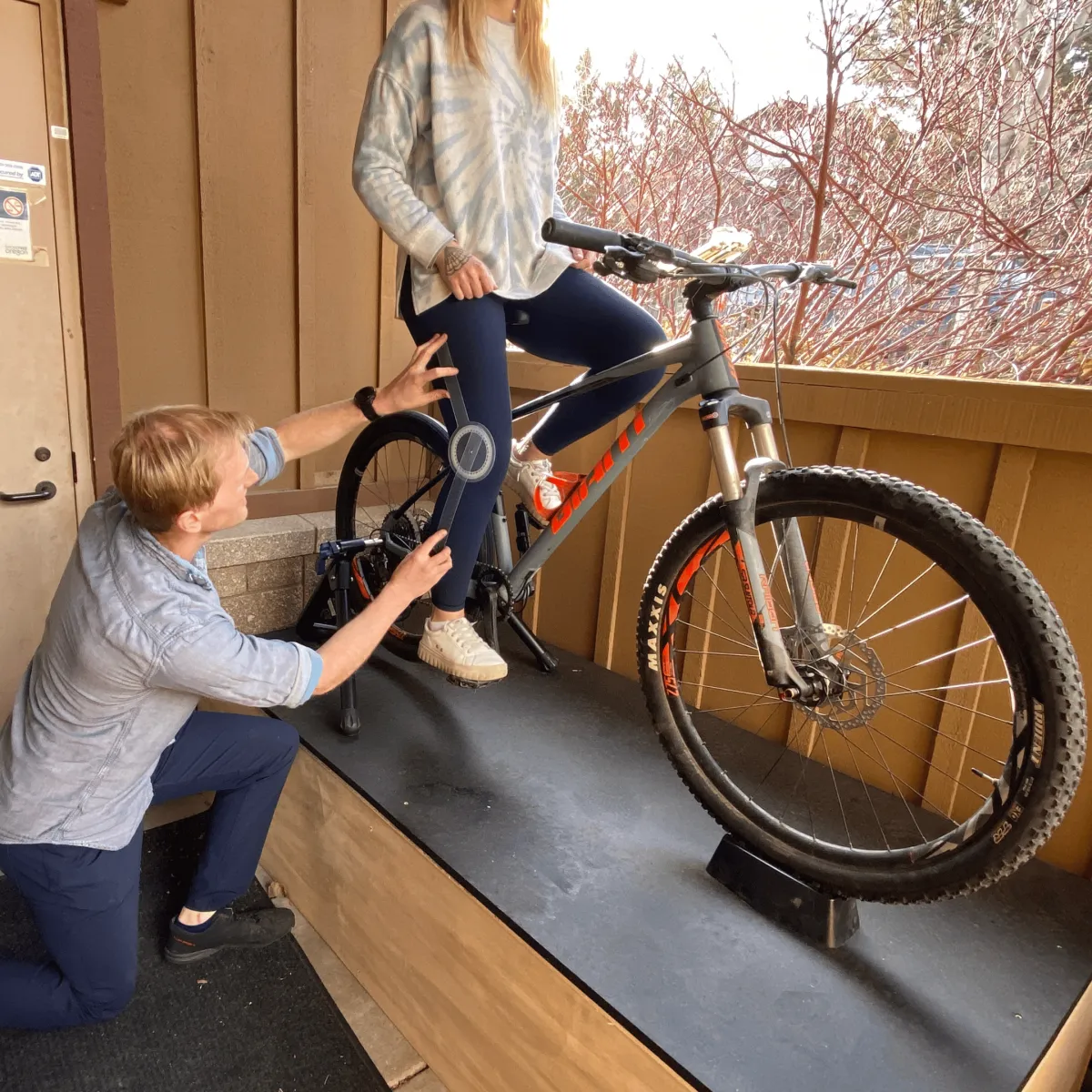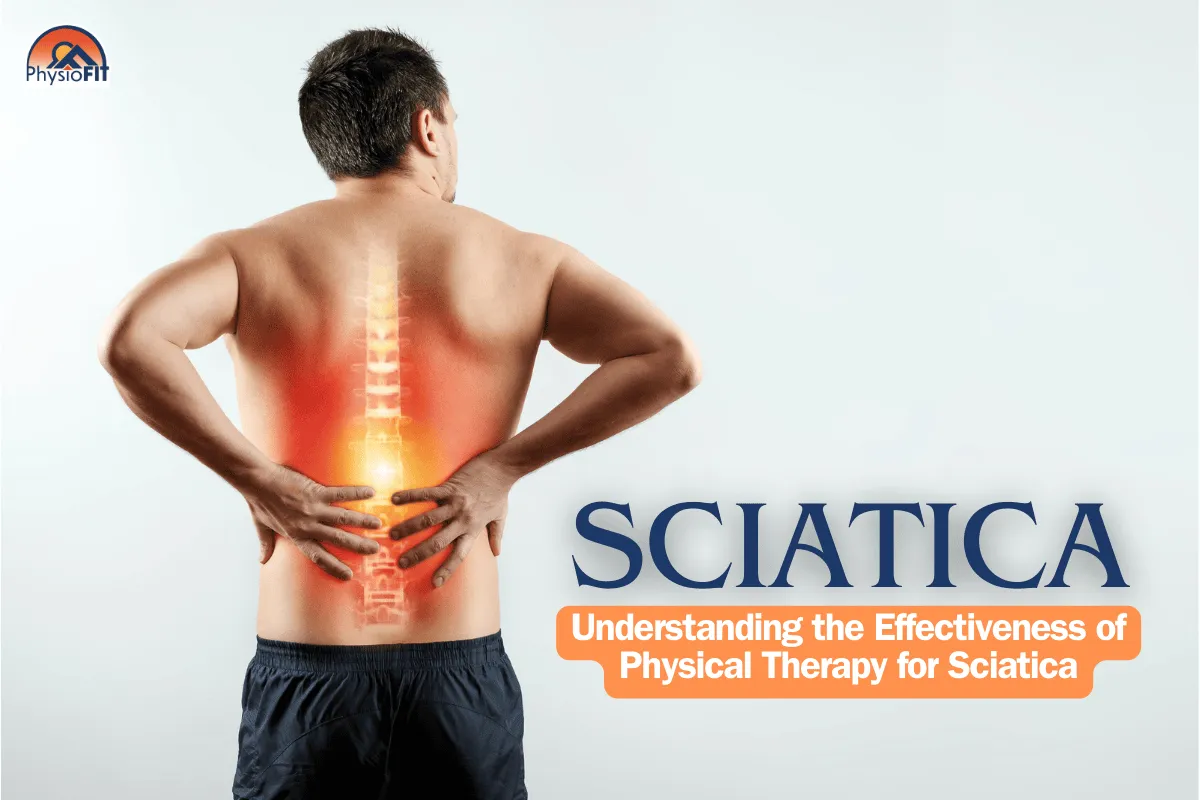Bike Fitting
Revolutionize Your Ride a with Bike Fitting at PhysioFIT
Welcome to PhysioFIT's bike fitting service, where your cycling experience is transformed. Our expert, Tanner Sommers, PT, DPT, brings unparalleled expertise in physical therapy and bike fitting to ensure you get the most out of every ride. Whether you're a seasoned athlete, a weekend warrior, or a daily commuter, our bike fitting service is tailored to meet your unique needs and goals.
Bike fittings at PhysioFIT are not just for professional athletes; they are for everyone who rides a bike. Our individualized approach caters to commuters, recreational riders, local athletes, triathletes, and mountain bikers. No matter your skill level or training background, a custom bike fitting can significantly enhance your riding experience.
The Many Benefits of a Proper Bike Fit
For Athletes: A proper bike fit significantly enhances athletic performance by aligning the rider's posture and bike mechanics to prevent injuries.
It optimizes the engagement of the right muscle groups, leading to increased power output and efficiency in pedaling, which is crucial for competitive cycling.
For Recreational Riders: Personalized bike fitting elevates the overall biking experience, ensuring greater comfort and enjoyment during rides.
It minimizes the likelihood of overuse injuries by correctly distributing the rider's weight and improving riding technique.
Riders receive valuable education on making adjustments to their bikes, which can provide immediate pain relief and prevent future discomfort.

What Does a Bike Fitting Involve?
Embarking on a bike fitting session at PhysioFIT is a comprehensive process designed to tailor your cycling experience to your body's unique requirements, lasting between 60 to 90 minutes. Led by the skilled hands of Tanner Sommers, PT, DPT, each session begins with a detailed assessment of your cycling goals, physical attributes, and any specific needs arising from unique conditions such as disabilities or the necessity for adaptive equipment.
Tanner employs a holistic approach, ensuring that the bike fitting transcends traditional measurements. He meticulously analyzes your biomechanics, considering factors like flexibility, limb length, and joint mobility, to customize the bike to your physiology. This customization is crucial not only for comfort but also for efficiency and power optimization during your ride.
Throughout the fitting, Tanner also provides personalized interventions that may include corrective exercises, stretches, or technique adjustments to enhance your cycling posture and prevent injuries. Moreover, he offers tailored education on how to maintain the ideal bike fit, addressing any concerns related to bicycle ergonomics. This education often encompasses guidance on self-assessment and making minor adjustments at home, ensuring your bike continues to fit perfectly as your body adapts and cycling proficiency evolves.
The fitting session is not just a one-time adjustment; it's an educational experience that empowers you with knowledge about your body's interaction with your bike. This session ultimately aims to address and alleviate any bicycle-related injuries or discomforts, ensuring that every journey you take is both enjoyable and ergonomically beneficial.
The Importance of a Regular Bike Fitting
Cycling is not a static sport – as you pedal forward, your body is also advancing in its capabilities and conditioning. This dynamic progression calls for an equally dynamic approach to how you fit your bicycle. Regular bike fittings are a cornerstone of maintaining peak performance and comfort. Here's why making bike fittings a regular part of your cycling routine is indispensable:
Adaptation to Physical Changes: As you cycle more, your body will naturally develop in strength, flexibility, and endurance. Regular bike fittings ensure that your bicycle is always aligned with these evolving physical attributes.
Injury Prevention: Over time, even minor misalignments can lead to discomfort or injury. Consistent bike fittings can preemptively identify and correct these issues before they become problematic.
Optimized Performance: As your skills improve, you may benefit from different settings that a bike fitting can provide, such as adjusting the seat height or handlebar reach to improve power and efficiency.
Enhanced Comfort: With regular use, bike components can shift or wear down. Regular fittings check and adjust these components to maintain the comfort you’re accustomed to during rides.
Alignment with Training Goals: Whether you're training for a race or building endurance, your bike should complement your goals. Regular fittings tweak your bike to match your training intensity and objectives.
Seasonal Adjustments: Changes in weather and seasons can affect your bike's performance and your comfort. Regular fittings can account for these variables, ensuring a comfortable ride year-round.
Personal Growth: As your cycling technique refines, what worked for you initially may no longer be ideal. Regular bike fittings adjust to your improved technique and riding style.
Technological Upgrades: If you upgrade your bike with new components, a fitting will ensure these new additions are perfectly configured to your body.
Aging Gracefully: As we age, our bodies require different support. Regular fittings can adapt your bike to your changing ergonomic needs over the years.

Meet Tanner Sommers, PT, DPT - Your Bike Fitting Expert
Tanner Sommers, a highly experienced physical therapist from Springfield, Illinois, leads our bike fitting services. With a background in Exercise Science and a Doctorate in Physical Therapy from Saint Louis University, Tanner is not only an expert in physical therapy but also a certified bike fitting specialist.
His holistic approach combines cutting-edge techniques like EMG/NCV, Level III dry needling, and virtual reality rehabilitation to provide a bike fitting experience that’s both scientific and personalized.
Please Note: The information provided on our website is intended for general education and is not a substitute for professional medical advice. Each individual's situation and body is different. Therefore, what may work for one person may not work for another. We care about your well-being and advise you to reach out to us to discuss your specific needs before implementing any advice from our website.
Your Source for All Things Physical Therapy in Bend Oregon
The PhysioBlog

Can Physical Therapy Help Sciatica: Understanding the Effectiveness of Physical Therapy for Sciatica
Please Note: The information provided on our website is intended for general education and is not a substitute for professional medical advice. Each individual's situation and body are different. Therefore, what may work for one person may not work for another. We care about your well-being and advise you to reach out to us to discuss your specific needs before implementing any advice from our website. If you’d like to explore this more or would like to schedule a time with a physical therapist in Bend Oregon, contact us at PhysioFITBend.com
Introduction
Imagine a pain that starts in your lower back and shoots down to your legs, making everyday activities a challenge. This is most often times, sciatica, a common yet often misunderstood condition. But there's hope. Physical therapy has emerged as a beacon of relief for those suffering from this debilitating ailment. In this comprehensive article, we'll explore the symptoms and impact of sciatica, delve into the efficacy of physical therapy, examine the types of therapy available, and discuss their success rates.
What is Sciatica and How Does it Affect You?
Sciatica is not your typical backache. It's a condition characterized by pain that originates in the lower back or buttock and travels down one or both legs. This pain is caused by irritation or compression of the sciatic nerve, the longest nerve in the body. Sciatica's pain is often described as sharp, burning, or even akin to an electric shock. It can vary in intensity and may be aggravated by sitting, standing for long periods, or certain movements.
Besides pain, sciatica can cause numbness, tingling, or muscle weakness in the affected leg or foot. Sometimes, these sensations can be as debilitating as the pain itself, making it difficult to walk or even stand.
The root causes of sciatica are diverse. A herniated or slipped disc, where the soft cushion of tissue between the bones in your spine pushes out, is a common cause. Spinal stenosis, the narrowing of spaces within your spine, can also put pressure on the nerves. Piriformis syndrome, where the piriformis muscle irritates the sciatic nerve, is another cause. Other factors like pregnancy, obesity, and prolonged sitting can increase the risk or exacerbate the symptoms of sciatica.
Neglecting sciatica can lead to worsening symptoms, chronic pain, and even permanent nerve damage. It's essential to seek timely treatment to prevent the progression of the condition and to maintain a good quality of life.
Physical Therapy for Sciatica: An Overview
Physical therapy stands as a beacon of hope for those suffering from sciatica. This non-invasive, medication-free approach is centered around relieving the symptoms of sciatica and addressing its root causes. Physical therapists use a variety of techniques tailored to each individual's condition.
Exercises aimed at strengthening the back and abdominal muscles play a crucial role in stabilizing the spine and alleviating pressure on the sciatic nerve. Flexibility exercises and stretches help improve the range of motion and reduce stiffness, further easing sciatic pain.
Nerve glides or neural mobilization exercises are particularly effective for sciatica. These exercises gently stretch and glide the sciatic nerve, helping to reduce nerve entrapment and improve nerve function.
Manual therapy, including massage and joint mobilization, can be instrumental in reducing nerve impingement by realigning the spine and relieving pressure on the sciatic nerve.
Efficacy of Physical Therapy: Is it Worth it for Sciatica?
When compared with other treatments like medication, injections, or surgery, physical therapy offers a unique advantage. It not only provides immediate pain relief but also works on the underlying causes of sciatica. Our approach here at PhysioFIT helps in reducing the recurrence of the condition and promotes long-term health of the spine and nervous system.
How Long Does Physical Therapy Take to Help Sciatica?
The journey to relief from sciatica through physical therapy can vary from person to person. Factors such as the severity of the condition, the specific cause of sciatica, and individual healing rates influence the recovery time. Generally, patients begin to experience relief within a few weeks of consistent physical therapy. However, achieving full recovery may take a longer period, depending on the individual's response to therapy and adherence to the prescribed exercise regimen. It’s important to find the proper physical therapist that can help with this. So be sure to contact us at our Bend location to make an appointment today!
What Therapy is Best for Sciatica?
Selecting the appropriate physical therapy technique is crucial and depends largely on the individual's specific condition and symptoms. For some, strengthening exercises may provide the most benefit, while others might find more relief through nerve glides or manual therapies. This decision is typically made following a comprehensive assessment by a skilled physical therapist.
The Success Rate of Physical Therapy for Sciatica
The success of physical therapy in treating sciatica is well-documented. Numerous studies and patient reports indicate substantial improvement in pain and functionality. Many patients are able to return to their daily activities without the debilitating pain that sciatica can cause.
Incorporating Physical Therapy into Your Sciatica Treatment Plan
Incorporating physical therapy into a treatment plan for sciatica begins with an assessment by a physical therapist. This assessment helps in creating a personalized treatment plan, which may include exercises, manual therapy, and education on posture and ergonomics. Regular sessions and at-home exercises are key components of this plan, and adjustments are made as needed to ensure continued progress and relief.
Conclusion
Physical therapy in Bend Oregon emerges as a highly effective, safe, and non-invasive treatment option for sciatica. By addressing both the symptoms and the root causes of the condition, physical therapy not only alleviates pain but also contributes to long-term spinal health. For those suffering from sciatica, physical therapy presents a viable path to recovery and a return to a pain-free life. So be sure to reach out today to make an appointment with us here at PhysioFIT.
FAQ Section
How often should I attend physical therapy sessions for sciatica?
The frequency depends on the severity of the condition. Typically, 2-3 times per week is recommended.
Can I do physical therapy exercises at home for sciatica?
Yes, home exercises are an important part of the treatment plan, but get guidance from your physical therapist first.
What lifestyle changes can support physical therapy for sciatica?
Maintaining a healthy weight, regular exercise, and proper ergonomics at work can help.
Are there any side effects of physical therapy for sciatica?
Physical therapy is generally safe with minimal side effects, but some discomfort may be experienced initially.
How do I know if physical therapy is working for my sciatica?
Reduction in pain and improvement in mobility are good indicators of progress.
Please Note: It's important to note that any exercises or techniques that are shared should be performed under the guidance of a qualified physical therapy expert to ensure correct technique and to prevent injuries. A physical therapist can provide a customized exercise program based on the individual's fitness level, goals, and any existing injuries or conditions. If you’d like to explore this more or would like to schedule a time with a physical therapist in Bend Oregon, contact us at PhysioFITBend.com
Copyright PhysioFIT 2023 . All rights reserved


